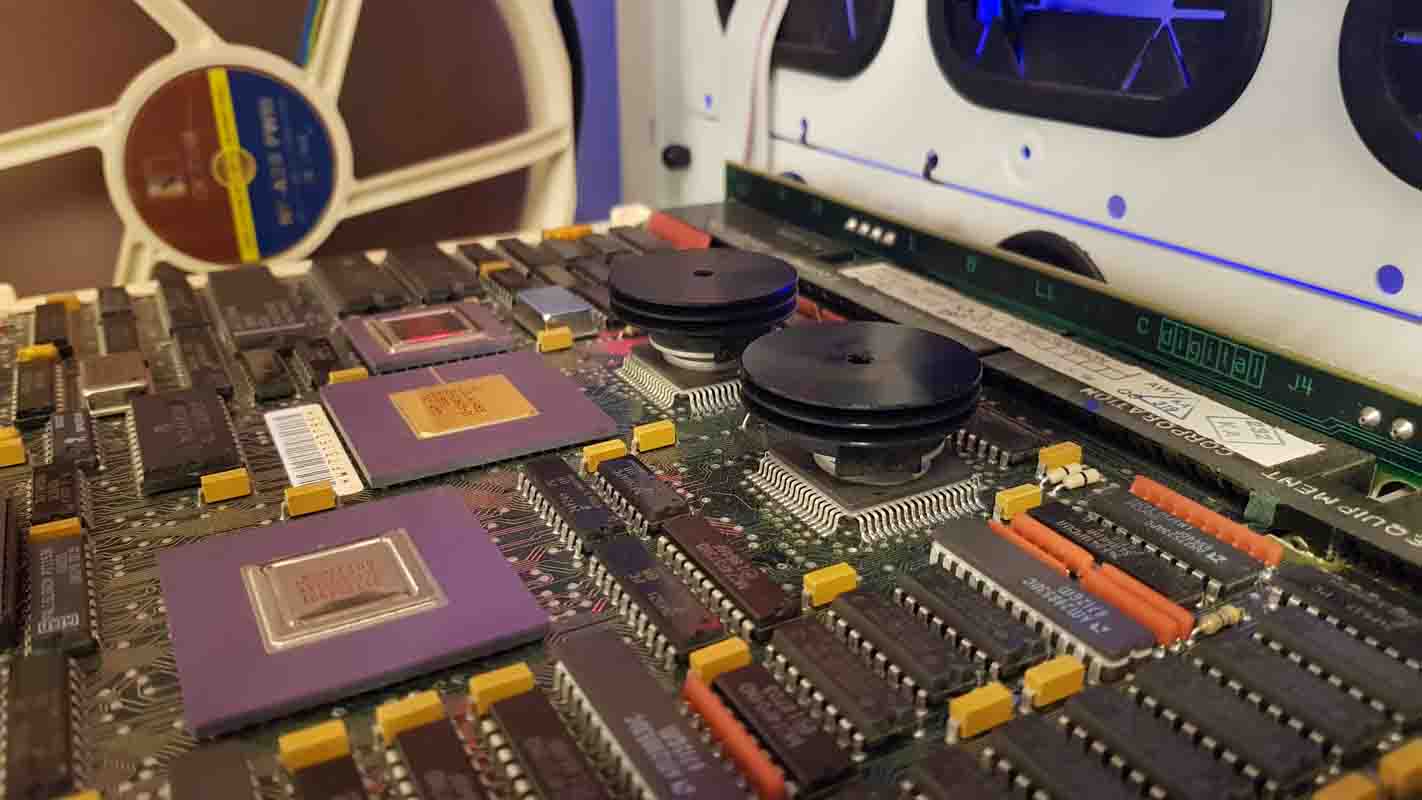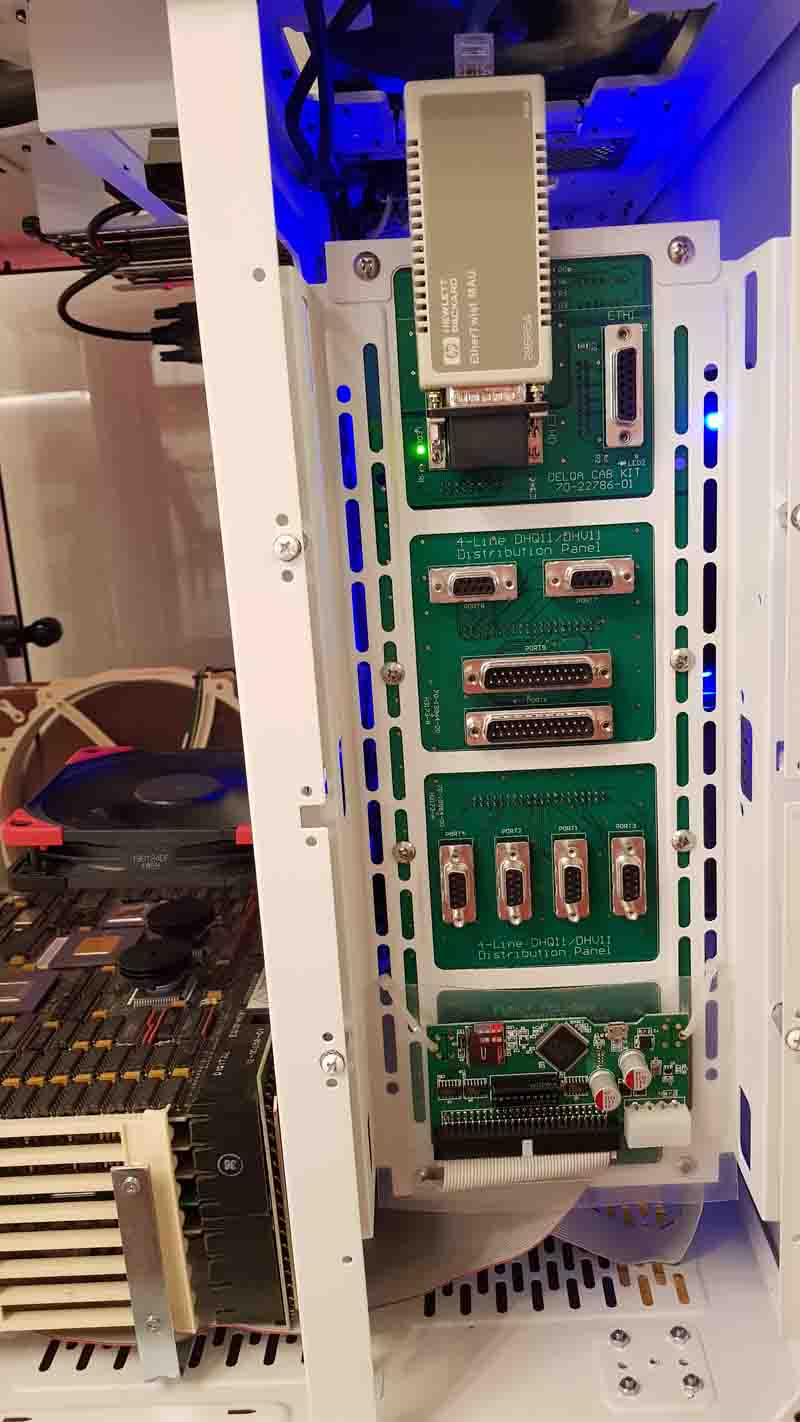


What is a MicroVAX II?
First: what is a VAX ?
“The VAX is a multiuser, multilanguage, multiprogramming, high performance computer system. It combines a 32-bit architecture, virtual memory operating system, and efficient memory management to provide essentially unlimited program space.”.
Examples of early VAX computers are the VAX 8800, VAX 8250, VAX 8530, VAX 8650, VAX-11/780 (the first one, introduced in 1977), VAX-11/750, and VAX -11/730.
The MicroVAX II is a minicomputer architecture introduced in 1985 by Digital Equipment Corporation.
“MicroVAX II is one of the most significant and exciting products we’ve ever had”
– Ken Olsen, 1985
The MicroVAX II (project codename Mayflower) was a new category of computer, a minicomputer-strength machine that could be placed out of the computer room and next to the people that used it. It sounds very natural today, but it was a new thing in the business workstation and departmental computing areas at the time.
The MicroVAX II could be used as a departmental server, supporting several users simultaneously. They would be using dumb terminals, such as VT220’s or VT320’s, that connected directly to the MicroVAX II’s serial ports (RS232) ,or to a DECserver terminal server which concentrated eight terminals on one side and connected to the MicroVAX through Ethernet on the other side. Users could also connect to the MicroVAX II using a graphics-capable terminal and run various CAD/CAM/CAE applications.
The MicroVAX II could also be configured as a personal graphics-capable workstation, which was called a Vaxstation II. It used the same hardware with the addition of a graphics controller. The graphics controller would have been a VCB01 monochrome or VCB02 (4-plane) controller, or a 3-board VCB02 controller set (8-plane). The Vaxstation II was typically hooked up to a VR290 color CRT monitor and and a mouse.
The project leader of the 32-bit CPU design team was Bob Supnik. Design honors are shared by several people - Dan Dobberpuhl (circuits), Dick Sites (architecture of V11, which provided at least half the design), and Rich Witek (architecture of the unique sections). Jesse Lipcon was the project leader of the first system. Less than 40 employees were assigned full time to the project.
The MicroVAX II CPU chip, designated MicroVAX 78032 and also DC333, was the first CPU in the world that integrated demand-paged virtual memory management on-chip. It was housed in a 68-pin SMD leaded chip carrier package. The CPU is accompanied by an FPU, the MicroVAX 78132 (DC337), a floating-point coprocessor.
The 78032 uses 3 Watts of power, while the 78132 uses just under 2 Watts.
The 78032 contained 125,000 transistors, and the 78132 contained 32,141 transistors. The ICs were manufactured in a ZMOS (3.0um NMOS Logic) process.
The MicroVAX II CPU board, designated KA630, is a single PCB, 8.25” by 10.5” in size, which is a quad-size QBUS board. It includes the CPU and FPU, as well as 1MB of DRAM, two gate arrays, Time-of-Year clock, boot and diagnostic ROMs, and a console serial line interface.
The time-of-year clock is implemented using a MC146818 integrated circuit, a once common but now extinct real time clock peripheral. The back-up battery resided on the console terminal serial line interface module (FUNCT SEL/SLU).
Two versions of the CPU board exist: KA630-AA, and the later KA630-BA. They are functionally identical.
Below are photos of the two common MicroVAX II enclosures, the BA23 "tower" and the BA123 "World Box", as they are being packed for shipping.
Technical characteristics of the MicroVAX Architecture
• 4-Gbyte virtual-address space
• 1-Gbyte physical-address space on the MicroVAX II (note: maximum of only 16MB possible on the actual machine)
• 32-bit word size
• Memory management
• Sixteen 32-bitgeneral registers
• Multiple addressing modes
• 32 processor-priority levels
• Vectored hardware and software interrupts
• Variable instruction size
• Subset of the VAX instruction set
• Emulation support for the unimplemented VAX instruction set except for
PDP-11 compatibility mode
• Subset of the VAX privileged registers
• Subset of the VAX data types
RAM Options for the KA630 were designated MS630. The MicroVAX II could run with only its internal 1MB of memory, or with the addition of one or two MS630-XX boards, which could be
each. The maximum possible RAM amount was 16MB, with two 8MB boards, in which case the KA630 internal DRAM was automatically disabled.
Disk options at that time would normally be one of
and in addition, a RX50 dual floppy disk drive, and a TK50 DLT tape drive, which was the first DLT drive on the market.
The hard and floppy disk drives were controlled by a RQDX3 (p/n M7555) MFM Winchester and floppy disk controller, which used a distribution board tucked away beneath the QBUS backplane.
The TK50 tape drive used 95MB tape cassettes. It was notorious for its slowness, and occasional tendency to eat up tapes and force users to manually excavate them from the drive. Its controller was a dual-size QBUS board, a TQK50-AA (p/n M7546).
Numerous other options could be installed, common ones were the DHV11 (8-line asynchronous multiplexor, M3104), the KDA50 SDI disk drive controller, and the DELQA-M Ethernet interface (M7516).